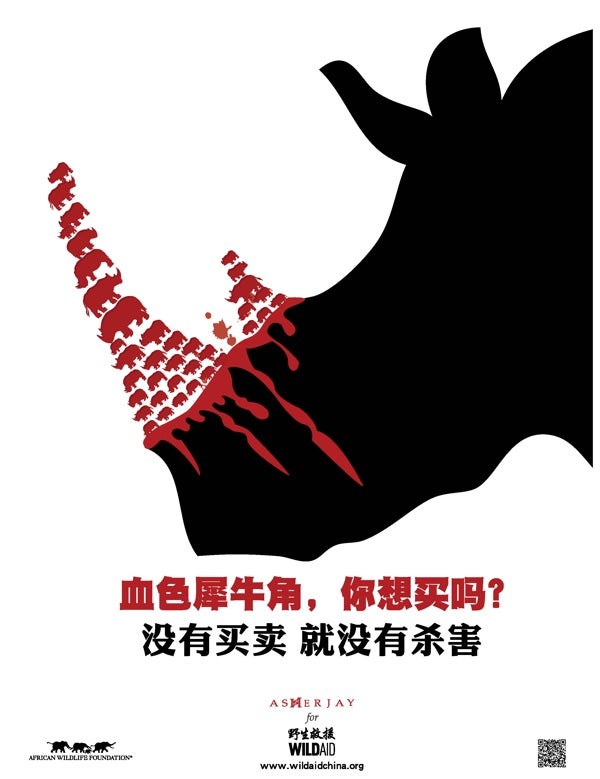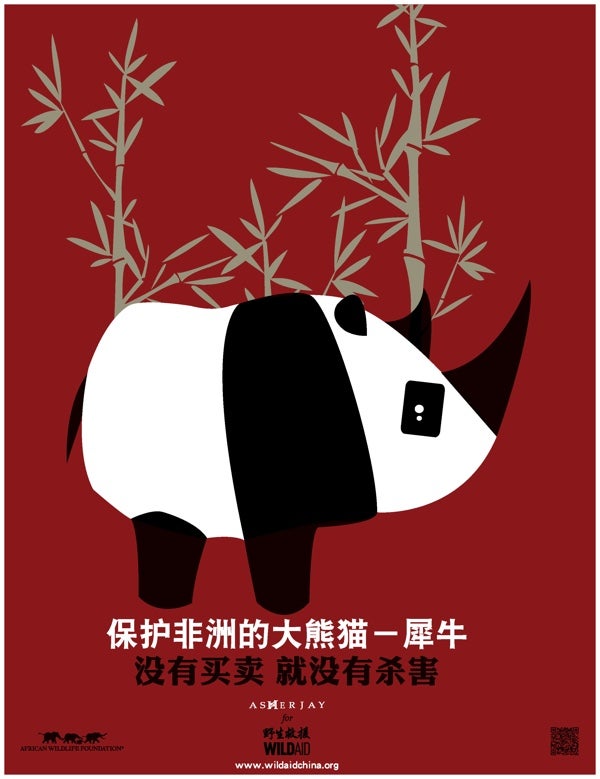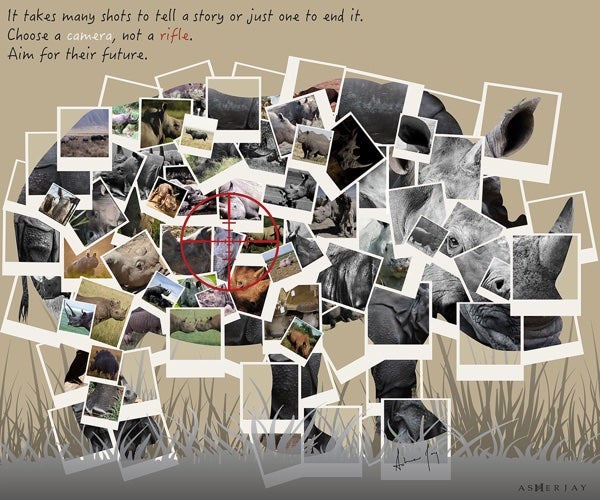This article was published in Scientific American’s former blog network and reflects the views of the author, not necessarily those of Scientific American
Species are disappearing at alarming rates around the globe, yet the vast majority of these extinction events fail to elicit even the tiniest of sobs from the general public. As one “enlightened” reviewer of Elizabeth Kolbert’s excellent book The Sixth Extinction so eloquently put it, “So what if scorpions, polar-bears, rattlesnakes and sharks go extinct. Who cares??” Well, I care, particularly in light of last week’s news that the San Diego Zoo was forced to euthanize one of the four remaining northern white rhinoceroses left on the planet. Now the fate of the species rests on three elderly individuals and the hope of a successful in vitro fertilization campaign. My heart is with the rhinos, but my money’s on extinction.
Artist, National Geographic Explorer, and creative conservationist Asher Jay has dedicated her career to raising awareness for these pressing conservation issues. Using large keystone species such as rhinos, elephants, lions and cheetahs as ambassadors for the greater cause, she addresses dwindling biodiversity in ways that are arrestingly creative and bold. Not surprisingly, a good deal of her work has centered around trying to expose and diminish the illegal trade of ivory and rhino horns. Sadly, for the northern white rhino, these efforts may be too late.

Blood Horns was part of a campaign designed to confront the illegal trade of rhino horns by three prominent organizations dedicated to the cause: WildAid, Save Our Elephants, and African Wildlife Foundation. The text asks would-be consumers if they would buy blood-stained horns, reminding them "if there is no trade, there is no killing." Image © Asher Jay, 2015. All rights reserved.
On supporting science journalism
If you're enjoying this article, consider supporting our award-winning journalism by subscribing. By purchasing a subscription you are helping to ensure the future of impactful stories about the discoveries and ideas shaping our world today.

Pandas of Africa: Elephant and Rhino compares Africa's rhinos to China's beloved pandas saying, "Protect Africa's big panda - the rhinoceros. When the buying stops, the killing will too." Image© Asher Jay, 2015. All rights reserved.

Aim For Their Future was created in response to an episode of Radio Lab, The Rhino Hunter, which Jay feels was biased in favor of trophy hunters over sound conservation practices. She asks why we aren’t promoting conservation models that preserve life like photo tourism over ones that monetize and perpetuate death. Image © Asher Jay, 2015. All rights reserved.
Jay is motivated by a profound feeling of connection to all life on the planet. In several interviews, she has suggested she was “raised by wolves,” and in this video from National Geographic, she describes her unusual reaction to a close encounter with a lion in Africa:
In her own words, "When people experience my work, I want them to stop and think and ask themselves questions until they get to a place where they know how they feel about an issue – endangered species or pollution or illegal ivory trade. Obviously, I am hoping to inspire others to take action in whatever way they can to be part of the solution to the problems of the wild, which affect us all. Not every work is going to get every person who sees it to become involved. However, at least by getting these messages out to the public, there will be greater awareness and the ability for people to make a conscious decision – to become involved in the crises facing our planet or not."
If you are moved to further explore Jay's work (here, here, and here), I promise you will discover more than just a clever graphic designer. Jay is the ultimate versatile artist-intellect, constantly learning and pushing boundaries, writing passionately and intelligently on a variety of issues (see her thoughts on the feasibility of 3D-printing rhino horns to relieve pressure on their illegal harvest and trade), publishing poetry, raising funds for conservation through the sales of her art, and more. When I contacted her to request permission to feature her artwork on Symbiartic, she informed me that she is working on a way to harness the public's compassion for animals through collaborative works of art - citizen scienceart, if you will. Later in the week, I'll elaborate on the project that inspired that line of thinking.
Facebook: https://www.facebook.com/
EarthHeiress